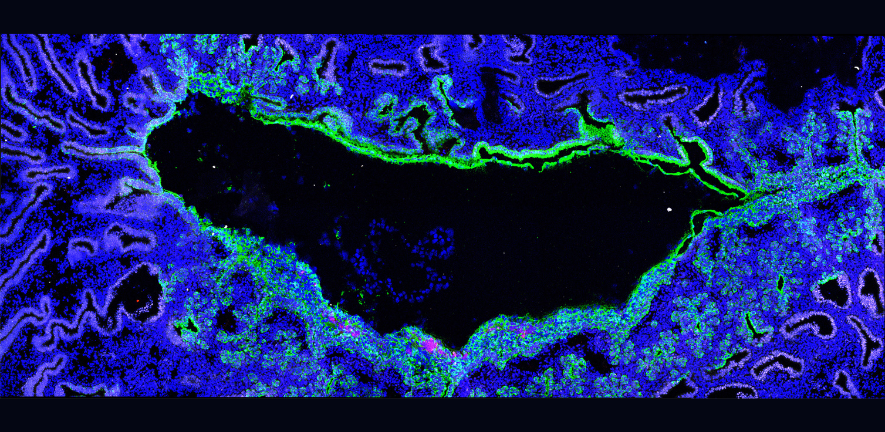
Submitted by Emily Rigby on Wed, 25/09/2024 - 09:52
PDN scientists have developed a pioneering method to culture marmoset placental cells in the lab, offering new insights into embryo implantation. Unlike human embryos, which implant deeply into the uterus, marmoset embryos undergo a much shallower implantation. This research opens new avenues for understanding the mechanisms regulating implantation depth in humans.
In human pregnancy, the embryo implants into the mother’s endometrium, a process mediated by the trophoblast – the outer layer of cells surrounding the early embryo. The trophoblast not only facilitates implantation but also forms the placenta, a vital organ that sustains the fetus throughout pregnancy.
Dr. Thorsten E. Boroviak from the Department of Physiology, Development and Neuroscience and the Cambridge Stem Cell Institute explains: "Successful implantation requires precise regulation of implantation depth. Misregulation can lead to severe placental disorders, such as placenta accreta, where the placenta invades too deeply into the endometrium."
The depth of trophoblast invasion varies significantly across primate species. In humans, the embryo burrows deep into maternal tissues, while in New World monkeys like the marmoset, implantation remains shallow and more superficial. Although human trophoblast development has been successfully modelled with trophoblast stem cells, equivalent stem cells from New World monkeys were previously unavailable.
To address this gap, the Boroviak lab generated molecular maps of marmoset embryos within the uterus and developed the first-ever marmoset trophoblast stem cells.
When comparing these cells to their human counterparts, the researchers discovered that although both responded to the same molecular signals, the outcomes were strikingly different.
“Marmoset trophoblast stem cells exhibited less invasive behaviour, closely resembling their natural function during shallow implantation,” said Dr. Boroviak. “This raises the exciting possibility of using these cells to better understand and control trophoblast invasion, particularly in cases where it goes awry, such as placenta accreta disorders."
Looking ahead, the team hopes to leverage these evolutionary differences in implantation modes to advance our understanding and treatment of trophoblast-related disorders.
This research was funded by the Wellcome Trust and reviewed and approved by the Institutional Animal Care and Use Committee of the Central Institute for Experimental Animals (CIEA). All animal studies adhered to the German Animal Protection Law and were approved by the German Primate Center.
Read the paper online at Marmoset and human trophoblast stem cells differ in signaling requirements and recapitulate divergent modes of trophoblast invasion - ScienceDirect


